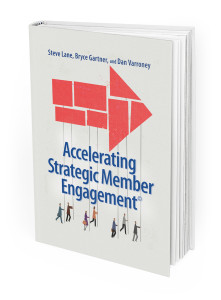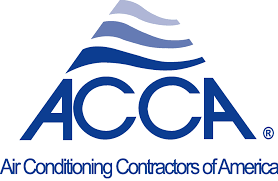Success Story
New Member Growth
Situation
An established Association looking to expand its membership base decided to dedicate resources to membership growth. Looking to expand industry representation, increase the number of members and grow revenues the organization saw this move as a good starting point. At this juncture, the new member recruitment function was part of the membership operation’s overall responsibility. Adding a new member sales team created turf and coordination battles with the existing membership staff. In addition, the new member sales effort had minuscule data, no strategy or adequate internal support to deliver consistent new member sales outcomes.
Core Assessment
Building Data Driven Strategies were essential. A comprehensive profile was developed to help the Association understand its impact with the membership and develop target market strategies:
- Which industries were already members.
- Which Board leaders were actively participating.
- Identified why these companies and Board members were active.
- Reviewed issue survey data to identify member “up at night” issue concerns.
- Understood why they participated in the Association and how they defined value.
- Examined which committees, programs and activities members were most active.
- Reviewed which industries and companies were not members.
- Researched which issues most impacting these industries and confirmed the Association’s involvement in these activities.
- Competitive analysis.
Strategy Implementation
The business intelligence aligned the association’s recruitment strategies to member’s “up at night” issues. This data defined a “total available new member market by industry segment” helping prioritize and focus its market and sales campaigns.
Operationally the team added marketing research support, lead tracking and lead generation technology to drive and track efforts throughout the year.
Organizationally the new member sales team were structured and partners with the member renewal team. Job descriptions, performance goals and bonus compensation emphasized and rewarded team success.
However, it was two key strategies that drove above plan success for the new member recruitment effort:
- Association staff leadership engaged active Board Members to recruit members. Board members wanted to spread the cost of the association around more companies and to accelerate legislative lobbying efforts. Board members were acknowledged for helping grow membership at executive committee meetings.
- Motivating policy and other staff to provide introductions and go on appointments was key. New member success was celebrated and shared at staff meetings. Staff helping the sales team recruit new members were publicly acknowledged.
Growth Results
Using actionable data, the Association achieved $1 million in new member revenue for the first time in its history. Soon thereafter:
- Additional sales staff were added and new member revenue grew to represent almost 50% of total new revenue.
- First year new member renewals improved from under 80% to over 90% (as part of an Association wide retention improvement initiative).
Success Story
Association Growth
Situation
With growing expectations for return on dues investment, the Association required additional funding and new members in order to build out its value proposition. The Association was not visible in its marketplace and required membership, sponsorship and annual conference attendance growth at its annual conference. Up to this point the Association was perceived as a best kept secret in its market space. Leadership wanted to see brand standards implemented with a coherent brand and strong media presence established.
Core Assessment
The Association embarked upon a competitive and market positioning and member needs assessment process. They also reviewed historical data, member benefits and annual conference program and sponsor offerings in order to determine its connection point to its core markets. Promotional materials and messaging on the Association’s website were also reviewed to determine the connection point to member and market needs.
The assessment identified the core market strength of the organization as well as its gaps and its opportunities to better serve members and sponsors.
The team utilized its findings to formulate a coordinated promotional branding strategy to establish the Association as the preeminent leader in its core markets. Creating new core market positioning, leveraging unique differentiators and a new logo formed the foundation of an aggressive and multi faceted promotional strategy.
Strategy Implementation
Working with a Public Relations firm, the Association implemented a marketing plan to build out its brand awareness among current members, prospective members and sponsors. The results included collateral materials and website presence reflecting the Association’s new strategies.
Market positioning included a first ever integrated marketing effort for the annual conference, through the design and writing content for marketing pieces including flyers, brochures, postcards and emails to targeted audiences.
As one of its key drivers, the Association utilized a thought leadership strategy. Studies and surveys were publicized, and created news through well-known industry partners.
Through its Public Relations firm, the Association negotiated strategic alliances and in-kind sponsorship’s with leading trade publications to boost the Association’s visibility. Representative News outlets, included among many others, branded newspapers and major broadcast. The Association achieved considerable coverage in markets including current and prospective members and sponsors as well as conference attendees.
Growth Results
The Association achieved mentions in thousands of news articles and participated in up to two dozen television interviews. The new business model organization delivered double digit membership growth, its revenues more than doubled and its conference attendance also doubled in slightly more than two years.
Success Story
Transform Business Model to Drive Growth
Situation
Following a good string of member revenue growth performance result, one national Association endured its worst revenue performance ever. Staggering dues losses, weak retention along with lackluster new member recruitment delivered a shock wave throughout the organization. Minor changes would not work, the Association needed a transformational effort.
Core Assessment
Conducted an extensive core review of historical data of member renewals, retention, dues and new member growth, member engagement, market positioning and unique differentiators, staff coordination and delivery of services, value proposition, marketing collateral, member renewal and recruitment processes, performance descriptions and performance goals, training programs and capabilities, base and incentive compensation. The connection and coordination of membership operations to the Association’s marketing, media, policy and public affairs apparatus was also assessed.
Data identified core market strength and also confirmed performance gaps in all aspects of the Association’s member value delivery system. The assessment identified departments functioning as individual entities instead of as part of one larger Association strategy.
From a membership operations perspective, conflicting goals and inconsistent direction were confusing front line membership staff on priorities. At the same time training, compensation and technology needs were not adequately addressed. Membership staff morale suffered and turnover of key personnel hampered renewal and sales efforts.
Strategy Implementation
The Association united around its mission, opened lines of communication between staff functions and focused its resources on helping the membership achieve its business objectives.
Staff leadership made member engagement, satisfaction and growth an Association wide strategy. Everyone on staff was now expected to satisfy and renew members and to help open doors and recruit new members. Silos once a fabric of the organization’s culture were no longer part of the culture.
The Membership operations group deployed new performance expectations, restructured its management team, management transparency was practiced, technology resources improved and a performance based compensation program were instituted. Regular training and idea sharing dominated team meeting discussions. Collaboration, mutual respect and coordination among membership staff became the new norm. New staff complimented existing staff and communication among the team accelerated.
Staff outside the Membership team were acknowledged for their success in renewing members and recruiting new members. Weekly coordination calls were conducted to coordinate member services and maximize opportunities to advance the Association’s policy agenda.
Board leaders were included in the unified core strategy. They were engaged in policy development and encouraged to participate regularly in grassroots and other lobbying activities. Board members were also encouraged to:
- Engage other Association members in meetings with elected officials.
- Communicate the Association’s value to their peers.
- Help recruit new members to drive key policy objectives.
Growth Results
The Association’s member retention accelerated to over 90%, new member and dues increase revenues grew as well. The new business model helped drive dues multimillion dollar dues in a four year timeframe.
 Sluggish global growth and U.S. growth, the race for talent, and disruptive innovation create opportunities for Associations and Professional Societies to become more essential. It’s all about alignment with industry and professional outcomes that your members care most about. Those organizations who utilize these 3 Association Growth Strategies can help impact member outcomes and as a result better position their members and their organizations for long term success.
Sluggish global growth and U.S. growth, the race for talent, and disruptive innovation create opportunities for Associations and Professional Societies to become more essential. It’s all about alignment with industry and professional outcomes that your members care most about. Those organizations who utilize these 3 Association Growth Strategies can help impact member outcomes and as a result better position their members and their organizations for long term success. According to Corey Rosenbusch, President and CEO, GCCA, the organization is taking its partnership a step further. The organization conducts qualitative research with their member’s customers to help align GCCA and their industry with the business outcomes their customers seek. Here again the organization impacts member outcomes.
According to Corey Rosenbusch, President and CEO, GCCA, the organization is taking its partnership a step further. The organization conducts qualitative research with their member’s customers to help align GCCA and their industry with the business outcomes their customers seek. Here again the organization impacts member outcomes. At the National Wooden Pallet and Container Association, Brent McClendon, President and CEO, continually seeks ways in which he can help accelerate member engagement. He does this by making sure that NWPCA listens closely to its members and then aligns its resources with the appropriate company and industry outcomes. One example of aligning its resources is through its software platform. Their proprietary software, “Pallet Design System” is both a product specification and engineering design tool as well as a professional marketing tool, and educational tool to serve the wood pallet industry. This platform accelerates member engagement and it’s a concrete example of how a product can drive future outcomes.
At the National Wooden Pallet and Container Association, Brent McClendon, President and CEO, continually seeks ways in which he can help accelerate member engagement. He does this by making sure that NWPCA listens closely to its members and then aligns its resources with the appropriate company and industry outcomes. One example of aligning its resources is through its software platform. Their proprietary software, “Pallet Design System” is both a product specification and engineering design tool as well as a professional marketing tool, and educational tool to serve the wood pallet industry. This platform accelerates member engagement and it’s a concrete example of how a product can drive future outcomes. The Smart Electric Power Alliance, SEPA, brings companies together in all aspects of power generation to design and build the industry of the future. Julia Hamm, President and CEO, and the SEPA team link the industry’s all stakeholders to develop, share, and build future focused solutions for their industry. The organization facilitates important conversations, doesn’t take sides, and serves as an industry convener. SEPA is all about helping members determine how to best drive future outcomes.
The Smart Electric Power Alliance, SEPA, brings companies together in all aspects of power generation to design and build the industry of the future. Julia Hamm, President and CEO, and the SEPA team link the industry’s all stakeholders to develop, share, and build future focused solutions for their industry. The organization facilitates important conversations, doesn’t take sides, and serves as an industry convener. SEPA is all about helping members determine how to best drive future outcomes.


